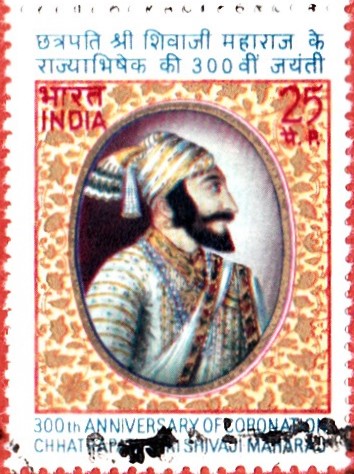
Chhatrapati Shivaji 1974
A commemorative postage stamp on the 300th Anniversary of the Coronation of Chhatrapati Shri Sivaji Maharaj of his realm at Raigad in 1674 :
 Issued by India
Issued by India
Issued on Jun 2, 1974
Issued for : The P&T Department deems it a privilege to join the nation in paying tribute to the memory of this great son of India by issuing a commemorative postage stamp on the occasion of the Tricentenary of his Coronation.
Description of Design : The design of the stamp is vertical and depicts the portrait of the Chhatrapati Shri Shivaji Maharaj.
Type : Stamp, Postal Used
Colour : Multi-colour
Denomination : 20 Paise
Overall Size : 3.91 X 2.90 cms.
Printing Size : 3.56 X 2.54 cms.
Perforation : 13 x 13
Watermark : Unwatermarked HS–2 Coated paper
Number Printed : 30,00,000
Number per issue sheet : 35
Printing Process : Photogravure
Designed and Printed at : India Security Press
Name : Shivaji Bhonsle I
Born on Apr, 1627 at Shivneri Fort, near Pune, India [then Maratha Empire]
Died on Apr 4, 1680 at Raigad Fort, Raigad, Maharashtra, India [then Maratha Empire]
About :
- Shivaji stands out in Indian history as a great patriot, an intrepid soldier and an enlightened ruler. His name has been a source of inspiration to all freedom fighters in this country. His brave and daring deeds have been narrated in countless stories and songs in several Indian languages.
- Shivaji was born in April 1627 at Shivneri, a hill fort in the district of Poona. His father Shahaji Bhosle was a doughty warrior and had a small landed estate around Poona where young Shivaji grew up. His mother, Jijabai, was a woman of austere and religious temperament. Her constant companionship, advice and reading of Hindu scriptures instilled in young Shivaji’s mind a burning hatred for wrong and injustice, a pride in the past glory of his country and an intense desire to carve out an independent kingdom.
- By daring military exploits, Shivaji captured several forts, built others and brought the surrounding country under his control. He defeated the Adil Shahi forces sent out to destroy him. His career of conquest brought him in conflict with the mighty Moghul Empire. Within a short span of a few years he was the master of an extensive territory. The auspicious day of 2nd June 1674 Shivaji had his Coronation with resplendent ceremony at Raigad. In the remaining six years of his life, he overwhelmed his foes and gave much thought to the organisation of his administration. He died on 4th April, 1680.
- Shivaji was not only a military conqueror but also a great ruler. Aided by his Council of eight Ministers – Ashtapradhan – he gave his kingdom an efficient administration, a disciplined army and navy and a public life based on justice, equity and equality.
- The famous Indian historian, Jadunath Sarkar, has this to say of Shivaji: “His reign brought peace and order to his country, assured the protection of women’s honour and the religion of all sects without distinction, extended the royal patronage to the truly pious men of all creeds and presented equal opportunities to all his subjects by opening the public service to talent irrespective of caste or creed. This was the ideal policy for a State with a composite population like India”.


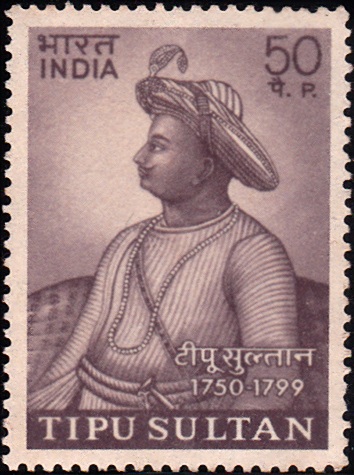
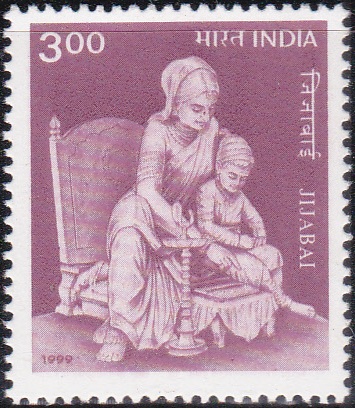
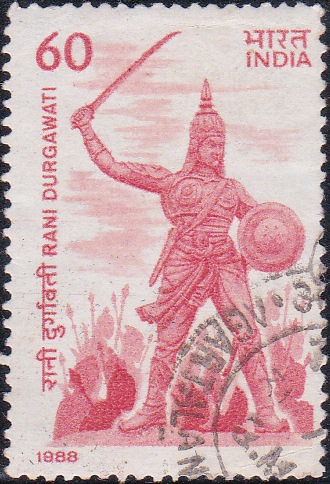
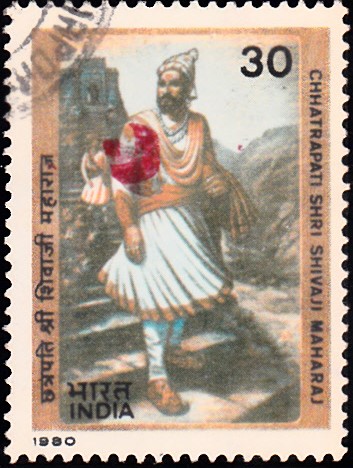
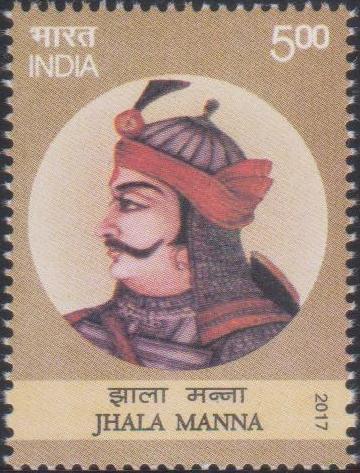
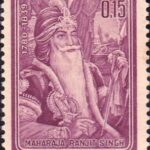
[…] Chhatrasal exhibited great courage during the attacks on Bijapur and Purandar. Later, influenced by Shivaji, he left the Mughal camp to meet Shivaji. Shivaji welcomed and encouraged him, presenting him a […]
[…] awards such as ‘Dadasaheb Phalke Award’. He was conferred with Sant Gyaneshwar Award, Chhatrapati Shivaji Award and was also awarded by the Sangeet Natak […]